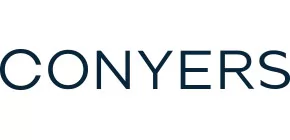We appreciate that these are challenging times and that the need for cross-border advice on insolvency and restructuring matters may be required at short notice. Conyers' attorneys are insolvency and restructuring experts. We are well-equipped to advise at all stages where financial stability becomes an issue and innovative solutions are required. In this article, we highlight certain points to be considered where Cayman incorporated entities are involved in the structure.
The Complications Involved with Cross-Border Restructuring
Cross-border restructurings often present a variety of challenging issues, not only for the entity involved, but also for the practitioners engaged to steer the process. This is often due to circumstances where the jurisdiction of incorporation of the company in financial difficulty does not have an efficient or sophisticated restructuring regime in place. It is standard practice for these companies to look to other jurisdictions for a clearer path forward or to seek to utilise parallel processes, such as (i) commencing Chapter 11 or Chapter 15 proceedings in the US Bankruptcy Courts or (ii) using a scheme of arrangement to implement the restructuring in England – provided the company can demonstrate it has a sufficient connection to England. However, it is clear that utilising these US or UK-based restructuring alternatives is not always appropriate. For example, it may be difficult to establish the nexus to the relevant jurisdiction or there may be adverse tax consequences associated with the proposal.
Cayman Schemes of Arrangement
In short, a scheme of arrangement in the Cayman Islands is the equivalent of a Chapter 11 plan in the US and broadly mirrors the administration procedure in England. Specifically, a Cayman scheme of arrangement is a court-supervised process which allows for the rights of creditors or members to be varied, by forcing the relevant non-consenting creditors and/or members into the compromise or arrangement. Although often used for financial restructuring involving external debt, a Cayman scheme of arrangement is a flexible tool and can also be utilised to facilitate (i) intra-group restructurings and reorganisations, (ii) mergers or (iii) take-private transactions. Helpfully, a scheme can also be used to implement a "pre-pack", where all the stakeholders involved in the process agree on the key terms of the restructuring proposal.
That said, a scheme is not a formal insolvency process and, in the absence of liquidation proceedings, the directors remain in control of the company whilst negotiating the terms of and promoting a scheme to stakeholders. Importantly, with respect to the Cayman Islands, a scheme of arrangement utilised outside of a formal liquidation process would not be able to benefit from the automatic stay from unsecured creditor claims that a provisional or official liquidation procedure offer.
At present, the Cayman Islands does not have a dedicated formal rehabilitation process for companies in financial distress akin to the US Chapter 11 or English administration procedures. However, a Cayman Islands scheme of arrangement, which, as noted above, can be utilised either with or without a provisional liquidation protective wrapper, is the flexible tool available to restructure a company's financial liabilities and it is the current process by which the rights of the creditors or members can be varied.
The Scheme objective
The relevant Cayman statutory framework broadly reflects the regime in England (and in other Commonwealth jurisdictions such as Canada and Australia). The Cayman court's jurisdiction is broad and, in addition to effecting a scheme in relation to any company which is liable to be wound up in the Cayman Islands, it is possible to shift a company's centre of main interests to the Cayman Islands in order to ground that jurisdiction.
The objective of a scheme of arrangement is to allow the company to enter into an agreement with its members and/or creditors (or any class of them) to either:
- restructure its affairs so that it can continue to trade and avoid a liquidation process; or
- reach a compromise or arrangement with creditors or members (or any class of them) after provisional liquidation has commenced.
In assessing a scheme, the Cayman court will consider the interests of the relevant class of creditor or member and seek to ascertain whether the class as a whole will benefit from the proposal. Whether such benefit is sufficient is a commercial matter for the creditors or members to approve and the Cayman court will not generally seek to interfere with that part of the process. Accordingly, so long as the requisite statutory majority (discussed below) of each class of creditors or members (as appropriate) support the scheme, all creditors or members will be bound by it and forced to accept its terms irrespective of whether they voted in favour of the proposal or not.
Dissenting stakeholders
A Cayman Islands scheme requires the approval of each class of affected stakeholder in order for the scheme to ultimately be sanctioned by the Cayman court. The threshold approval requirement is prescribed by statute, which provides that at least a majority in number representing 75 per cent in value of those voting, in person or by proxy, need to vote in favour of and approve the terms of the proposed scheme. So, whilst the level of consent for a Cayman Islands scheme is higher than that required to approve a plan of reorganisation in Chapter 11 proceedings, the scheme remains an effective company restructuring and rescue tool, especially when used in conjunction with parallel US proceedings.
Adding to the above, unlike in Chapter 11 proceedings, where a plan can sometimes be confirmed in circumstances where there is a non-accepting class of stakeholder (subject to certain controls, such as 'the absolute priority rule'), if any class of stakeholder that would be affected by a proposed Cayman Islands scheme does not approve the terms under which the scheme proposes the restructure, then the scheme as a whole will not be able to be sanctioned by the Cayman court and will fail. That said, subject to the circumstances of the restructure, it may be that the scheme class composition can be structured to avoid this situation derailing the proposal.
All stakeholders affected by a scheme, including those who oppose the proposal, have the right to attend the sanction hearing and have their objections to the scheme heard by the Cayman court. As noted above, the Cayman court will be reluctant to tamper with or take a view on the commercial aspects of a proposal. Therefore, whilst the sanction hearing provides a forum for open opposition to a proposed scheme, provided the scheme procedures have been followed and the requisite statutory majorities have been achieved at the scheme meeting, the Cayman court is likely to consider that the affected stakeholders are the best judges of their own commercial interests and will, except in very specific circumstances, ordinarily approve the scheme.
Parallel Proceedings
The Cayman Islands restructuring provisional liquidation regime, including the use of a Cayman scheme of arrangement, is routinely used to support Chapter 11 proceedings.
This involves a petition to the Cayman court seeking to appoint light touch restructuring provisional liquidators, who are qualified insolvency practitioners. If required, a foreign qualified practitioner can also be appointed jointly with the Cayman Islands provisional liquidators. As mentioned above, appointing provisional liquidators results in a stay on proceedings brought by unsecured creditors in the Cayman Islands and this limits the risk of dissenting creditors derailing the main Chapter 11 proceedings.
Where necessary (such as where there is non-US law governed debt), a Cayman Islands scheme of arrangement might be used to compromise the debt of the Cayman Islands debtor to mirror the terms of the Chapter 11 plan. The Cayman court, Cayman insolvency practitioners and Cayman attorneys are well-versed in dealing with parallel proceedings, which may give rise to issues of comity, conflict of laws and co-operation.
Utilising a Cayman scheme
A restructuring of US law governed debt ordinarily requires recognition pursuant to US law. Helpfully, a Cayman Islands scheme of arrangement, when used in the context of a Cayman provisional liquidation, is able to be recognised under Chapter 11 and Chapter 15 procedures and is likely to be significantly cheaper to implement than the US alternatives. There are now many examples of US Bankruptcy Courts giving full force and effect to the terms of the Cayman Islands scheme. As noted above, this ultimately prevents dissenting creditors from taking action, seizing US property of the debtor and attempting to derail liquidation proceedings.
The content of this article is intended to provide a general guide to the subject matter. Specialist advice should be sought about your specific circumstances.



